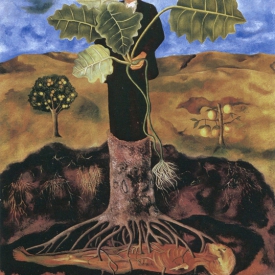
Green Burial
Decomposing in a hole in the earth 101.

What is green (or natural) burial?
For most of human history, what we now call green burial was just called “burial.” A simple, shallow hole dug into the earth, and the shrouded dead body placed into the hole. Green burial has remained an integral part of religious and cultural practice for many whose history and culture has historically been marginalized.
In many modernized areas of the world, cemeteries require the body be placed in a metal or wooden casket, then placed in a concrete or metal vault. The earth is not coming anywhere near the dead body.
In addition:
“American funerals are responsible each year for the felling of 30 million board feet of casket wood (some of which comes from tropical hardwoods), 90,000 tons of steel, 1.6 million tons of concrete for burial vaults, and 800,000 gallons of embalming fluid. Even cremation is an environmental horror story, with the incineration process emitting many a noxious substance, including dioxin, hydrochloric acid, sulfur dioxide, and climate-changing carbon dioxide.” via Just How Bad is Traditional Burial?
In this article, Natural Burial and Embracing Decay, we discuss the reasons it can be existentially valuable for our society to accept this kind of decomposition when we die.
“If we work towards accepting, not denying, our decomposition, we can begin to see it as something beautiful. More than beautiful— ecstatic. The ecstasy of decay begins as disgust and revulsion, the way we feel when we imagine ourself as a corpse. But disgust and revulsion turn to pleasure as we use that feeling to realize we are alive now. We will someday be dead, but today blood pumps through our veins and breath fills our lungs and we walk the earth.”
If you’re the documentary type, enjoy Steelmantown – a short documentary on a green burial ground and A Will for the Woods– where musician and psychiatrist Clark Wang prepares for his own green burial.
What is conservation burial?
Conservation burial is green burial plus!
Here’s a definition from one of our favorite cemeteries in the world, Prairie Creek Conservation Cemetery:
Green burial is a safe and legal burial practice that uses biodegradable containers and avoids embalming fluids and vaults. Conservation burial goes a step further to commit burial fees to pay for land acquisition, protection, restoration, and management.
Not only does conservation burial help protect land, but the burial area becomes hallowed ground, restored to its natural condition and protected forever with a conservation easement. Native plants beautify the burial sites. Citizens who support conservation are offered a more meaningful burial option with the certainty that protected land is the ultimate legacy to leave for future generations. Families and friends are brought closer to nature in the commemoration of their loved one’s life.
Conservation burial can be considered as “chaining yourself to a tree post mortem,” not allowing development on the land where your corpse rests.
For more information or to locate a conservation burial ground in your area, visit the Conservation Burial Alliance.
Where can I find a green burial ground near me?
If you are a resident of the United States, here is an excellent place to start searching for a green burial ground in your area. Also, Google around, because new green burial grounds are opening all the time! For conservation burial grounds, go here. Go visit, and find just the right place for your future corpse.
OUTSIDE THE U.S.
Green Burial Grounds in the U.K.
Is it safe to have uncoffined bodies near a water source?
Done responsibly, absolutely.
Although there is some evidence of microbiological contamination in the immediate vicinity of cemeteries, the rapid attenuation of the microorganisms suggests that they pose little risk to the public.
There is little evidence of microbiological contamination of groundwater from burial.
Microorganisms involved in the decay process (putrefaction) are not pathogenic.
Interestingly, in studies done on groundwater outside a conventional cemetery, found more evidence of contamination from coffin and embalming materials than human decay. The more you know.
Here is an excellent review of the science and studies done on the subject.
How deep are the bodies buried?
Green burials tend to be shallower than most burials– nearer to the surface is where all the good, nutrient rich soil is.
Burial at 3-4 feet rather than 5-6 feet places the body at a depth that allows greater oxygen flow, which in turn feeds bacteria, resulting in more rapid, efficient decomposition. In addition, at a depth of 3-4 feet, beneficial carrion beetles burrow in to aid the process. via The Green Burial Council
We know what you’re thinking. and no– as long as there is a 2 foot depth there is no smell and animals won’t be digging up and dragging away your corpse!
Are green burials legal?
In a word, yes.
However, cemeteries are allowed to set their individual policies. So, if a cemetery wants to require that a family purchase a casket and a vault for the dead body (so it is easier for them to landscape) they are within their rights to do so.
It’s important though, that you don’t let anyone tell you that buying a casket or vault is the law. It is not the law. It is the cemetery’s policy.
How do I start a green burial ground?
Do you own a piece of land you think might make a good natural burial ground? Starting a dedicated cemetery is more complicated than you might think, but it’s worthwhile pursuit for those wanting to be a part of the green death movement.
Here is a primer on starting a green cemetery.

